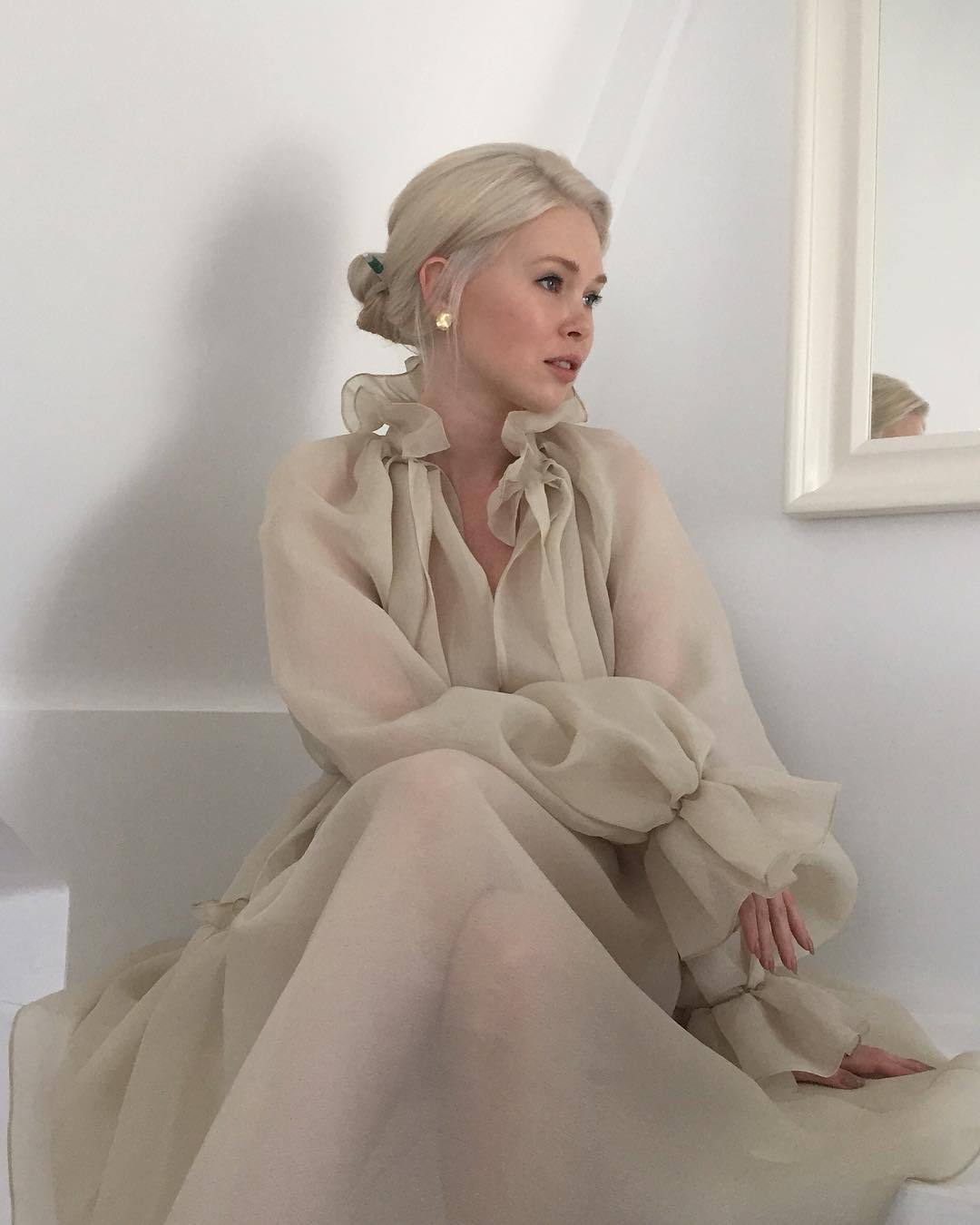© BD PERIPHERIQUE / BE IN OPEN / TEXTS ON FASHION ISSUE 1

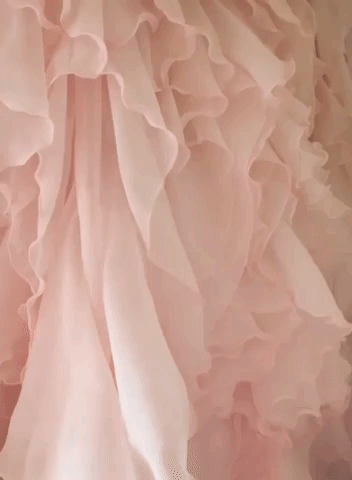


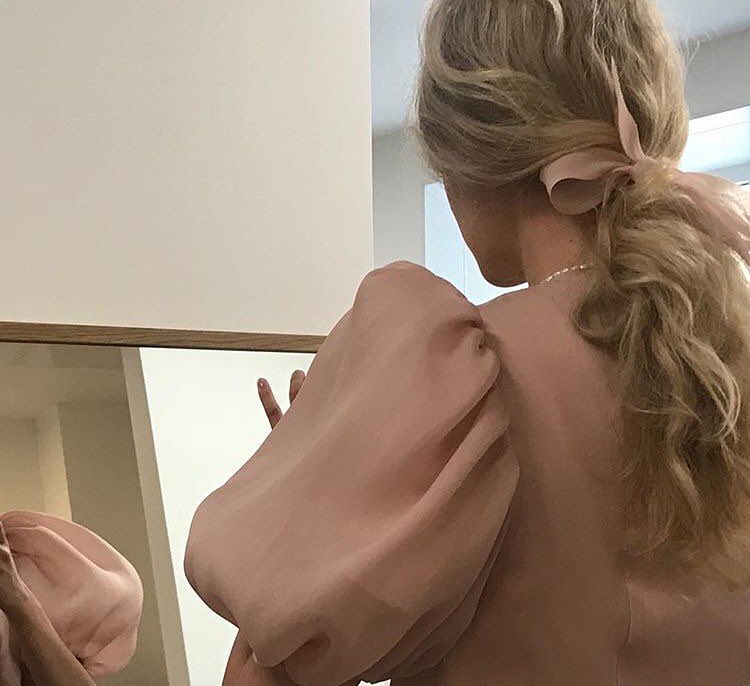
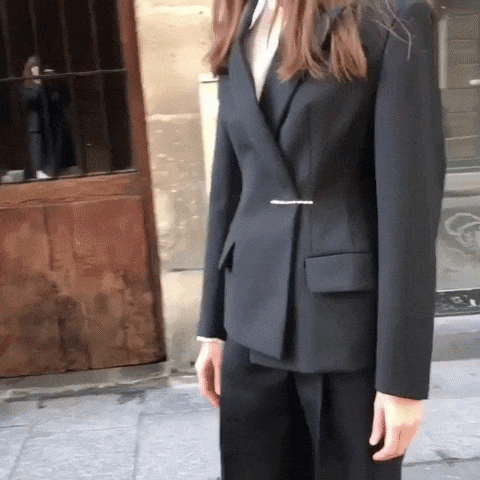
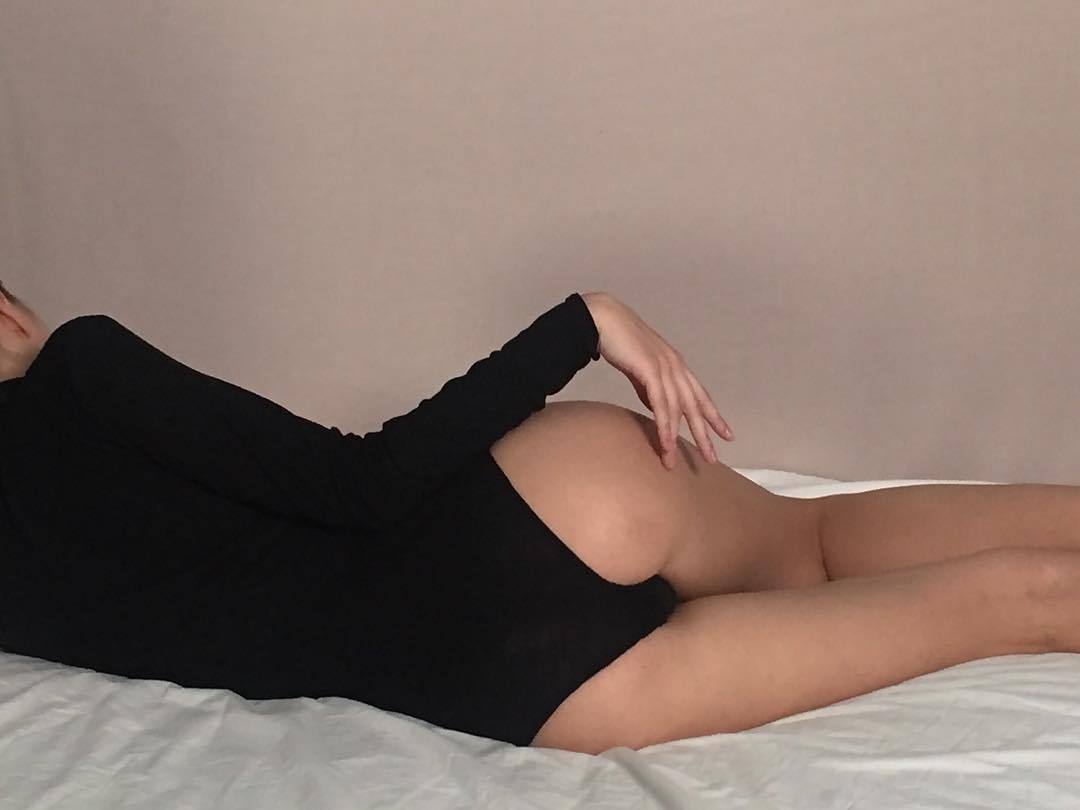
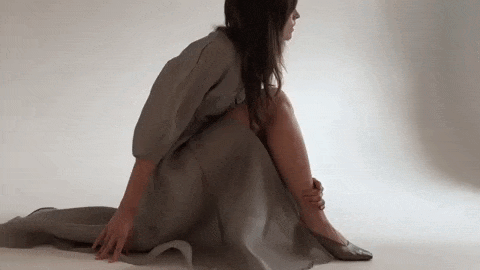

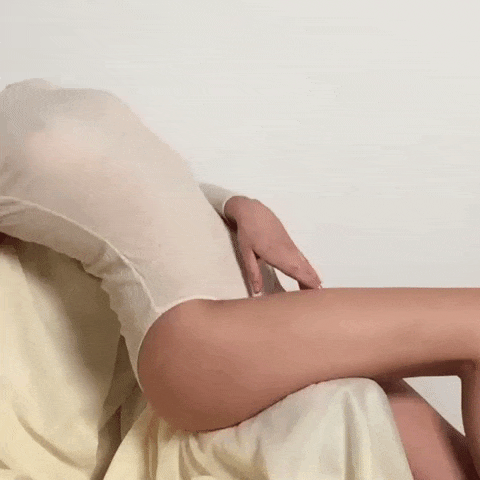
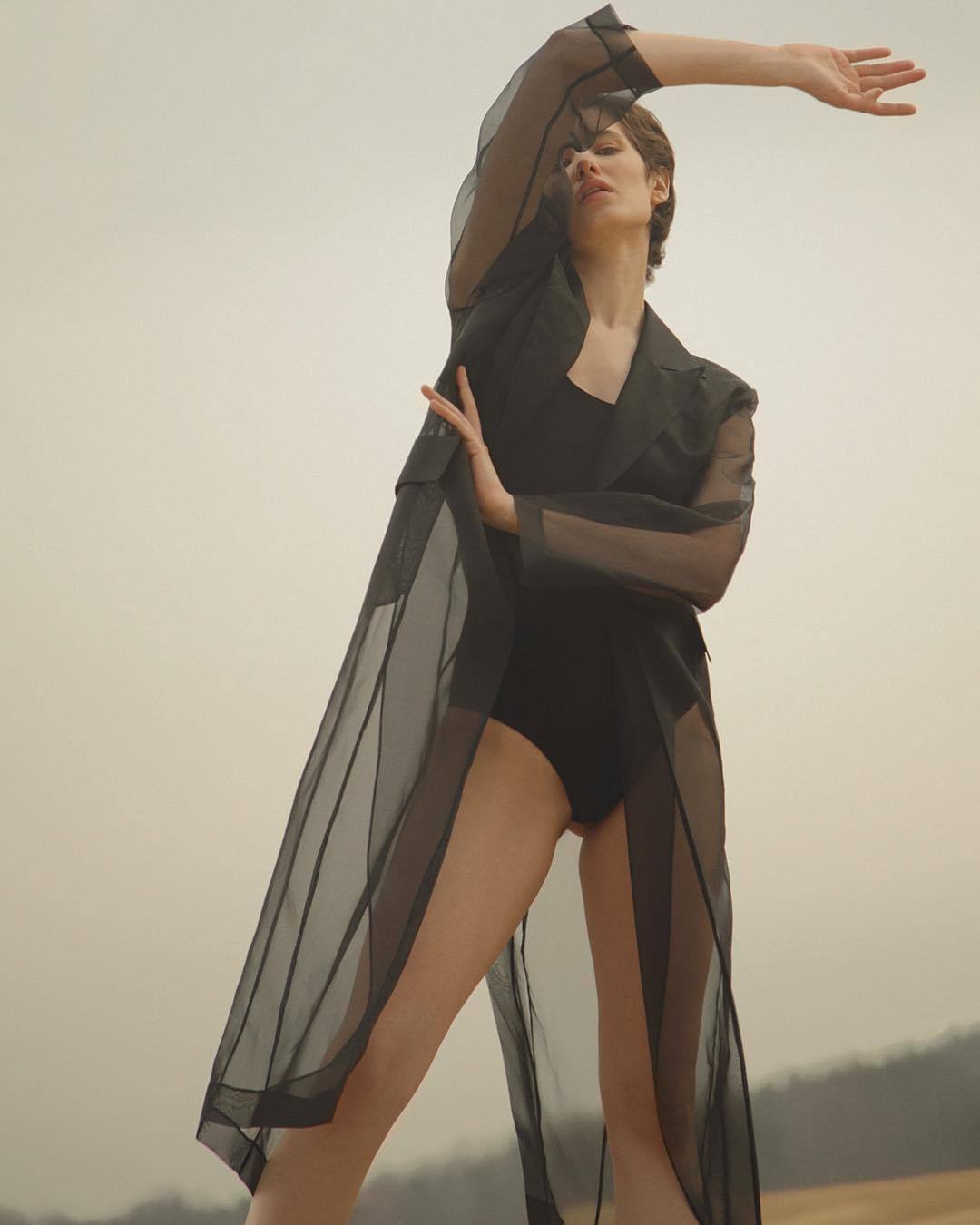
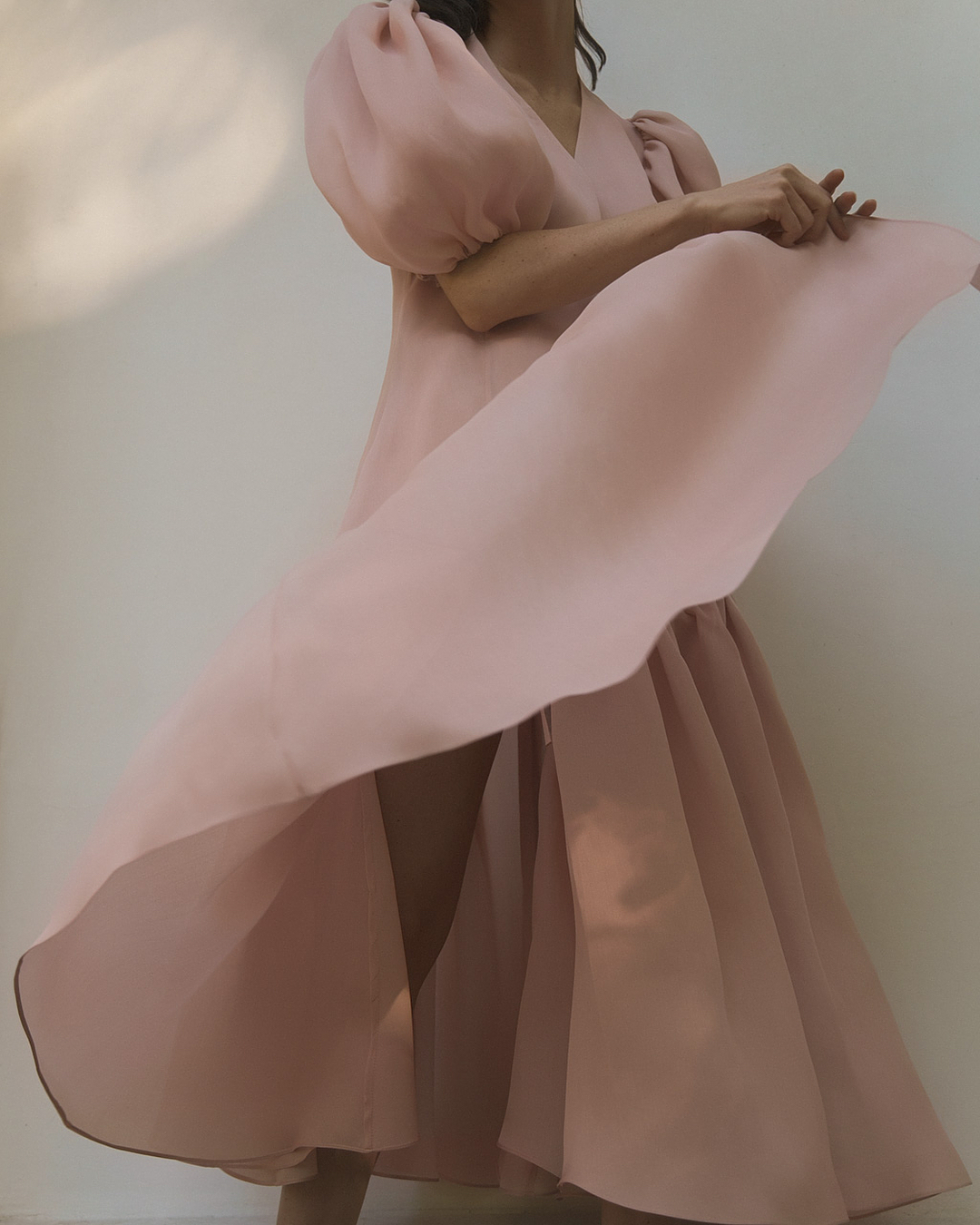
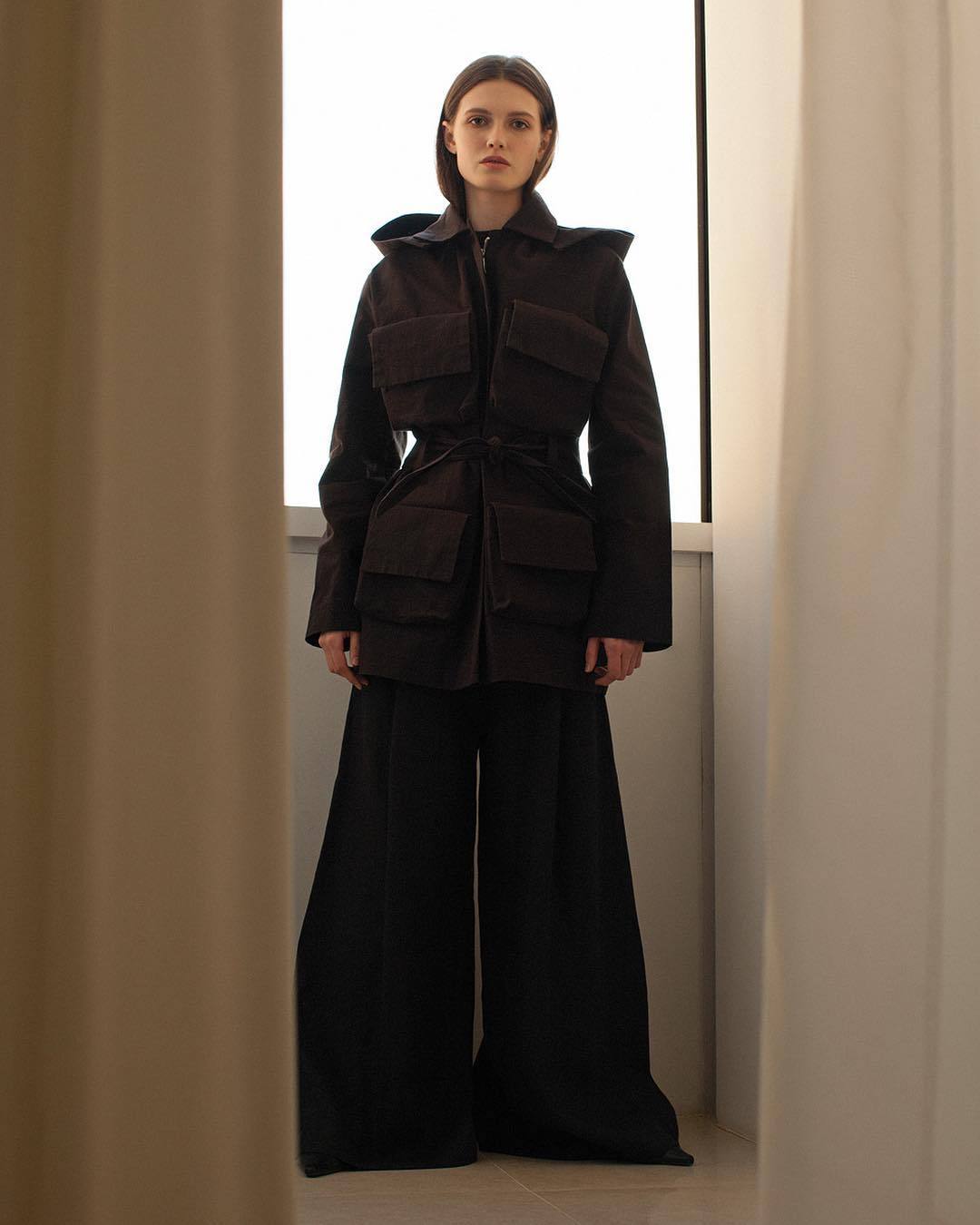
ON BRAND VISUAL DESIGN
THE ST. PETERSBURG-BASED BRAND MY812 HAS BEEN AROUND FOR SEVERAL YEARS, BUT ITS RECOGNIZABLE VISUAL CONCEPT WAS ONLY FORMED LAST AUTUMN. HOW DID IT APPEAR AND WHO WORKED ON IT? WE HAVE TALKED TO THE FOUNDER OF MY812 ALBINA ZUEVA ABOUT CREATIVE PROCESSES AT THE STUDIO, INSPIRATION AND POSITIONING. THE CONCEPT HAS ALSO BEEN COMMENTED BY KSENIA SHABALINA, WHO WAS ENGAGED IN THE DEVELOPMENT OF THE VISUAL STYLE, STYLIST ZALINA SHOKAROVA AND PHOTOGRAPHER ANASTASIA LISITSYNA, WHO ARE CURRENTLY RESPONSIBLE FOR THE VISUAL ASPECTS OF THE BRAND.
TEXTS ON FASHION
How did the MY812 brand appear?
I have no art or design education; I studied public relations at the university. At some point, I sat down and made my first dress and it seemed to me that this was exactly what I wanted to do. After that, I took a couple of lessons on drawing and clothes design, and, filled with some unexplainable eagerness and passion, decided to put this knowledge to work and made my first capsule collection of five dresses of different styles. At that time, I did not think of reproducibility and scaling. Having had these dresses ready, I started looking for a place to sell them. This is how I met Ksenia Shabalina; three years ago, she worked as a buyer for the Russian Room Russian designers showroom. Later, she became the art director of MY812.
I saw your collections of those years; their style was quite different.
We are all growing. Each collection reflects what happens to me over a certain period of time. I have recently realized that both the studio and the brand itself function as a living organism. It is in a constant dialogue with the outside world, with us, with itself. Back then, I was 23 year old, and now I am 29.
One of the work incentives is the bar that we constantly raise. For example, after we have designed a new silhouette or mastered a skill, I may see a new fabric which we have never dealt with before, we buy it and we all learn how to handle this material.
Nobody does the routine work here. I understand that everyone gets tired from the fabric and from repeating routine operations. For example, we pack silk dresses and bodysuits into silk bags with embroidery. When we cannot put a tag on an item, we embroider the brand name on it. This work is very similar to meditation. We just sit down for half an hour and embroider the logo with a thread matching the colour of the clothing piece. I do not even know if anyone notices this afterwards. As a result, all our girls have learned to embroider. When I went on a short five-day vacation, I took a bag of silk with me and would sit outdoors and embroider the MY812 logo.
One of the work incentives is the bar that we constantly raise. For example, after we have designed a new silhouette or mastered a skill, I may see a new fabric which we have never dealt with before, we buy it and we all learn how to handle this material.
Nobody does the routine work here. I understand that everyone gets tired from the fabric and from repeating routine operations. For example, we pack silk dresses and bodysuits into silk bags with embroidery. When we cannot put a tag on an item, we embroider the brand name on it. This work is very similar to meditation. We just sit down for half an hour and embroider the logo with a thread matching the colour of the clothing piece. I do not even know if anyone notices this afterwards. As a result, all our girls have learned to embroider. When I went on a short five-day vacation, I took a bag of silk with me and would sit outdoors and embroider the MY812 logo.
THE LAST DRESS TOOK MY ASSISTANT AND ME TWO MONTHS TO MAKE. I WANTED ITS SLEEVES TO HAVE A SHAPE OF A ROUND-TRIMMED TREE. SO, WE FINALLY CAME UP WITH EACH SLEEVE, CONSISTING OF 140 PARTS. IF WE GATHER COURAGE TO REPEAT THIS MODEL ONCE AGAIN, WE WILL MAKE IT OF 280 PARTS
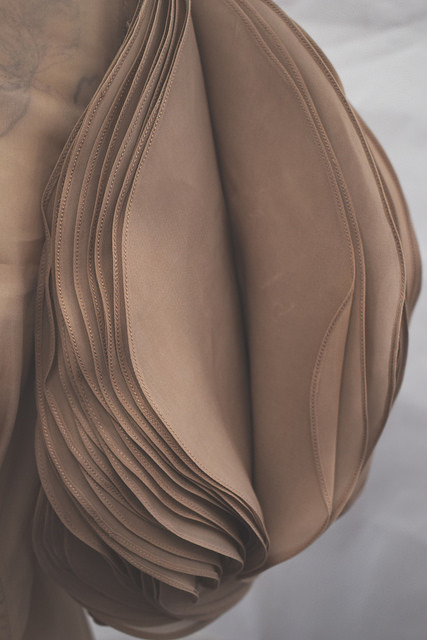
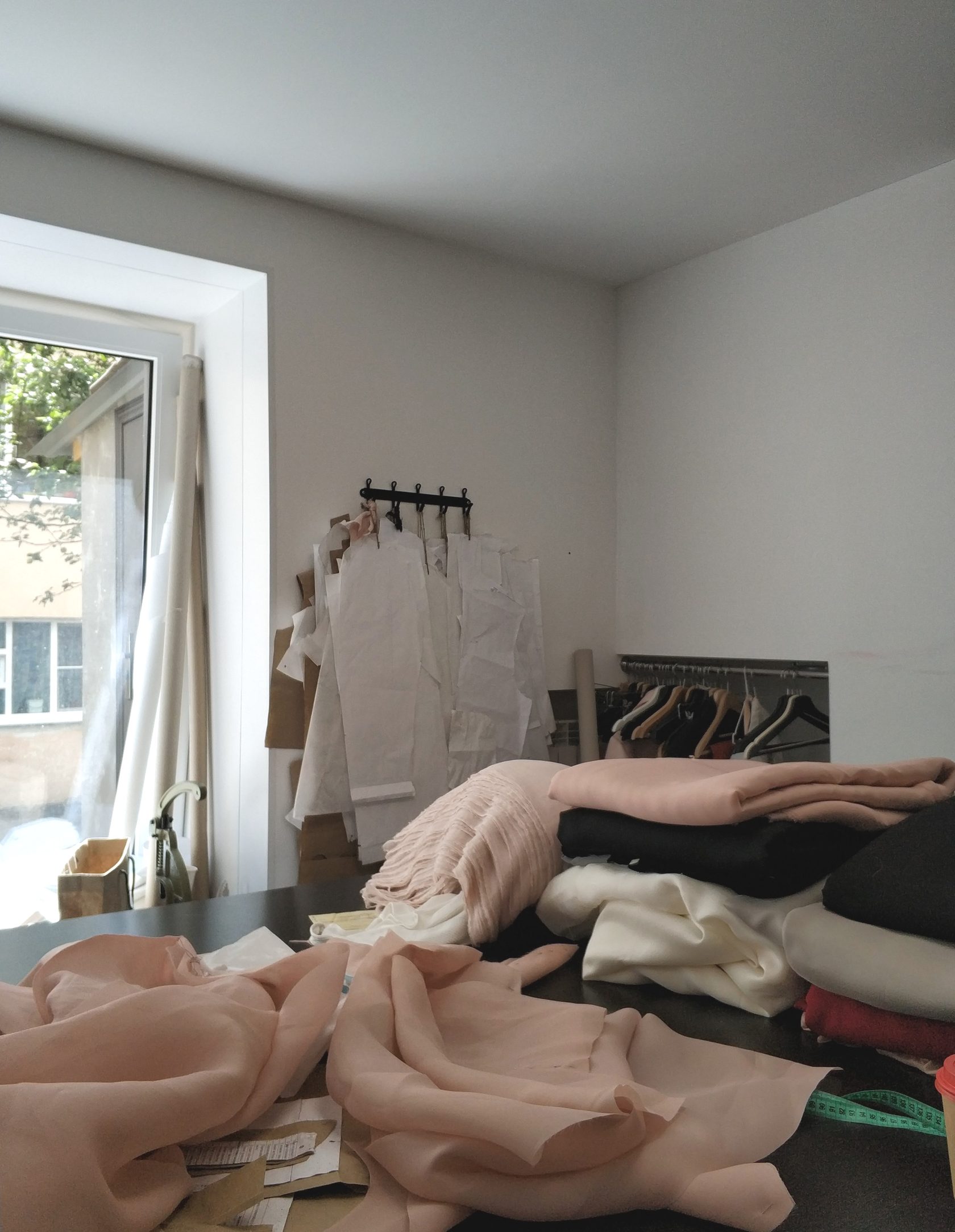
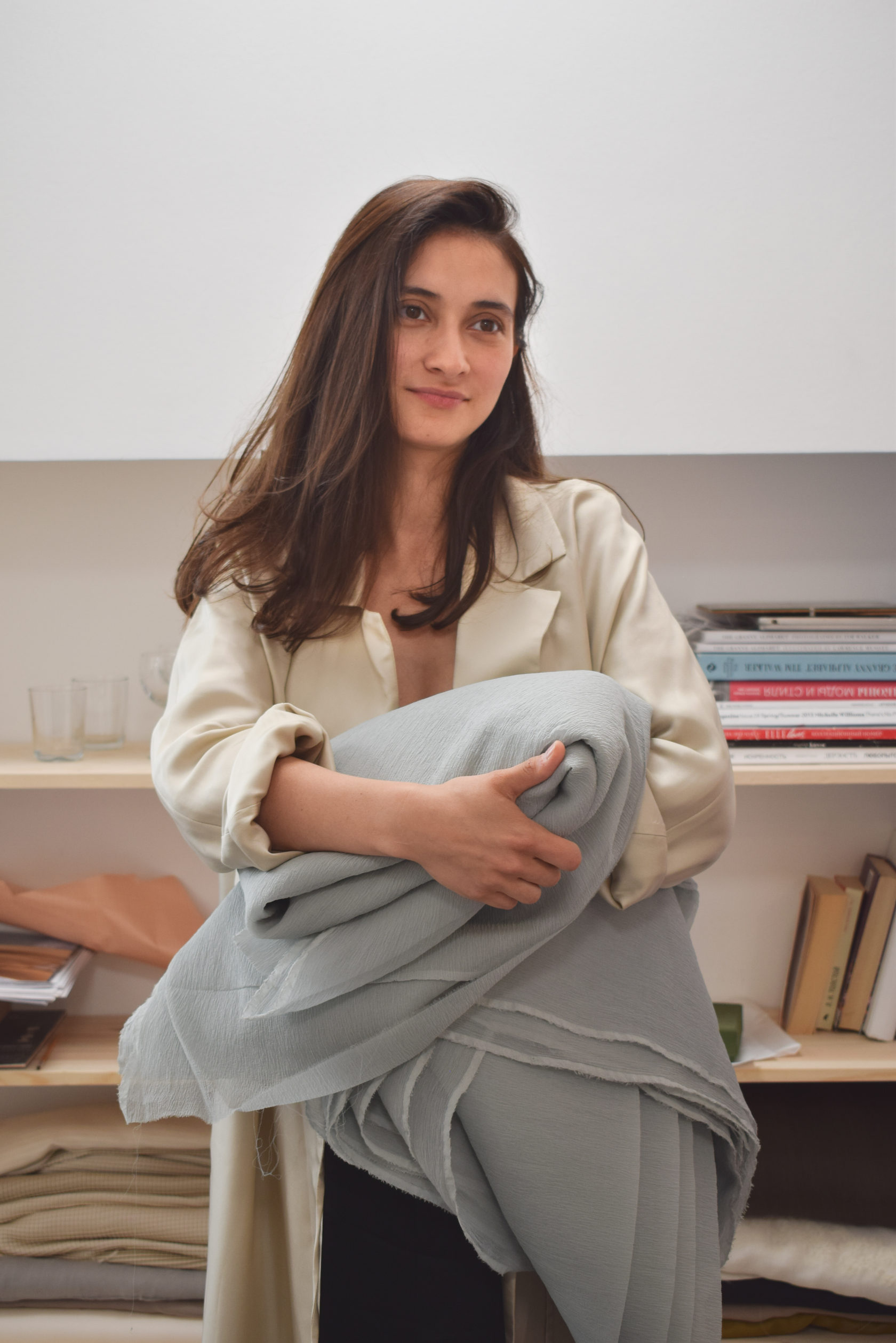
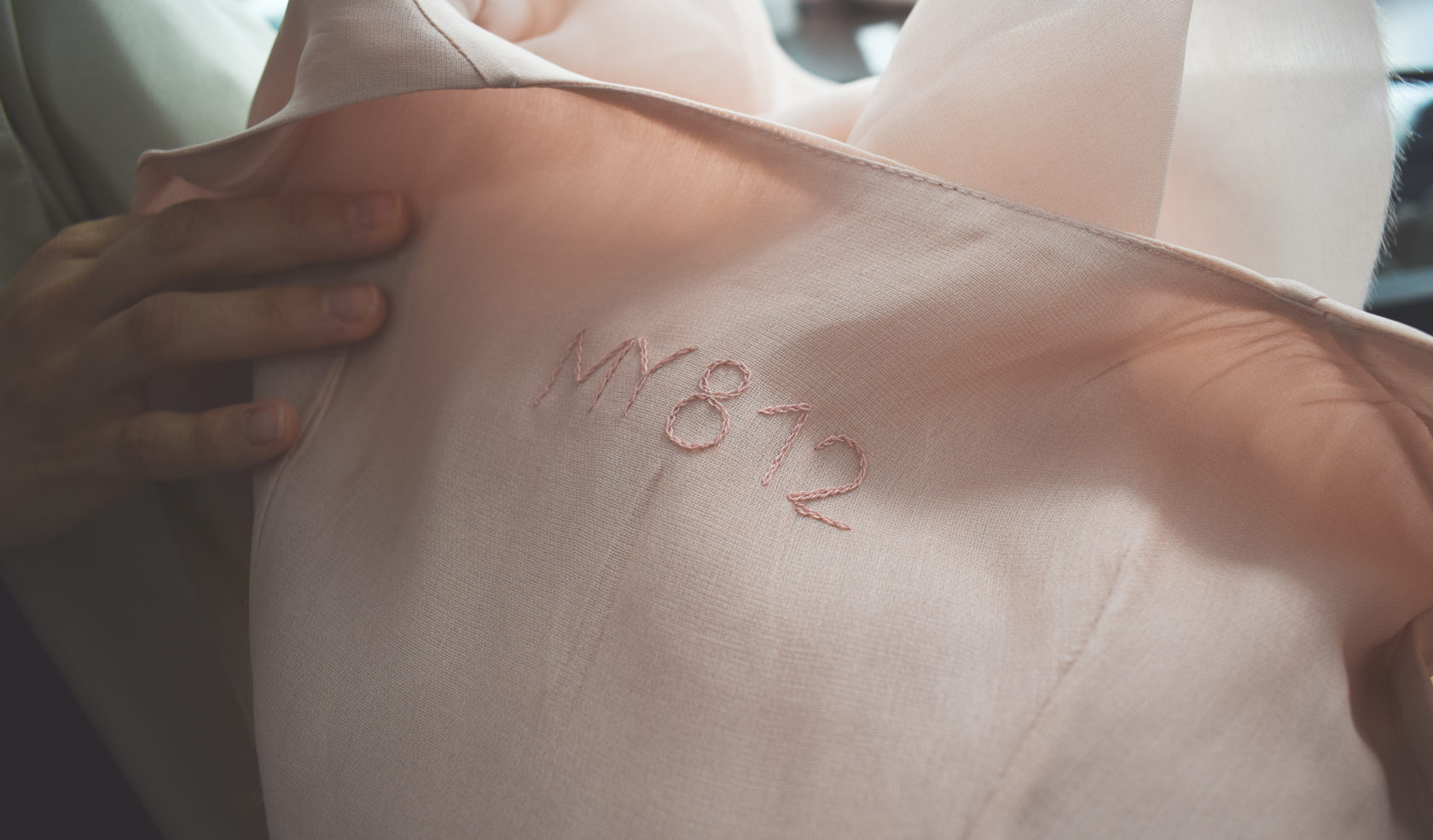
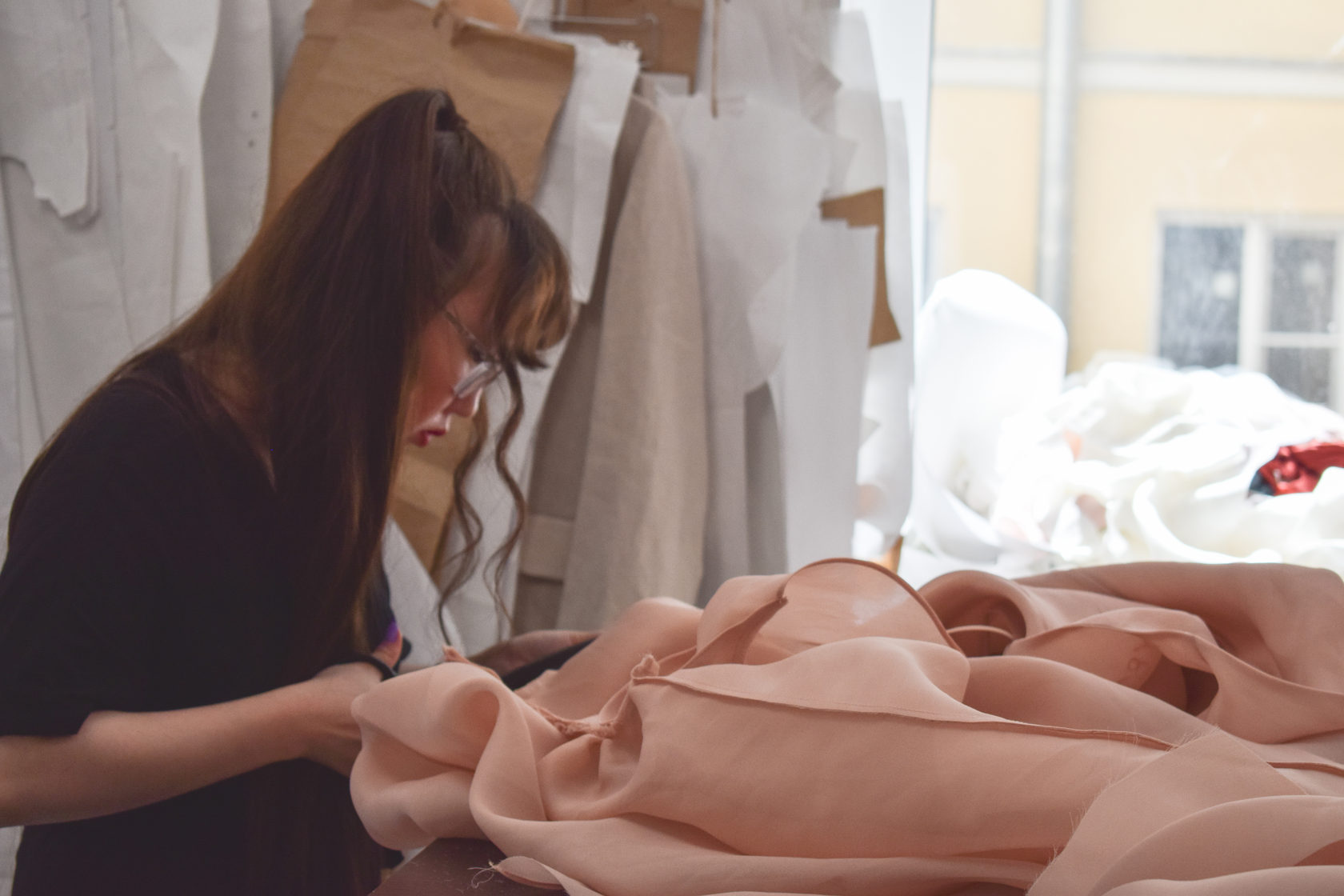
How do you design sophisticated clothing without a formal designer education?
My favourite word is intuitively. We have the basic line of well-elaborated models and there is the main line, which is always a continuation of a more complex work. For example, last year, the entire team suddenly agreed on making this one dress. It was very difficult since everyone had to stop what they were doing and start searching for the right tools to implement this new project. Afterwards, this translated into a simplified version for the main collection we are working on. Simultaneously, we have to produce the basic collections, such as cotton dresses in the summer and bodysuits in the winter. We are now making a very sophisticated dress of many meters of silk. I love silk very much, but every material has its own character and you have to look for the way to approach it properly.
We have a dress that we call "the onion". It is a multi-tiered dress, which is visually very simple, with a plain silhouette. Tailoring takes two days, but requires a very extensive preparatory period: you need to pull out one small thread with an interval of seven centimetres from an eight-meter-long fabric piece.
The last dress took my assistant and me two months to make. And the problem was not the silhouette again; it just that I wanted its sleeves to repeat a shape of a round-trimmed tree. In spring, I saw a man cutting trees in the form of perfect balls and I thought of dress sleeves. We chose silk and, while creating the dress, solved many problems and tried numerous techniques before finally reaching the goal. As a result, each sleeve consists of 140 parts. If we gather courage to repeat this dress again, we will make 280 parts per a sleeve. If we go into details, this is a very long and complicated process, because each of the 140 parts has an edge that needs a finish.
Some dresses we make are unique, existing in a single copy. They are used to build up our archive. When we started making such pieces, it was only to test our skills. However, after the photo shoots, people often try to buy them despite the fact that they are not for sale.
The last dress took my assistant and me two months to make. And the problem was not the silhouette again; it just that I wanted its sleeves to repeat a shape of a round-trimmed tree. In spring, I saw a man cutting trees in the form of perfect balls and I thought of dress sleeves. We chose silk and, while creating the dress, solved many problems and tried numerous techniques before finally reaching the goal. As a result, each sleeve consists of 140 parts. If we gather courage to repeat this dress again, we will make 280 parts per a sleeve. If we go into details, this is a very long and complicated process, because each of the 140 parts has an edge that needs a finish.
Some dresses we make are unique, existing in a single copy. They are used to build up our archive. When we started making such pieces, it was only to test our skills. However, after the photo shoots, people often try to buy them despite the fact that they are not for sale.
What project was the most difficult in terms of manufacturing?
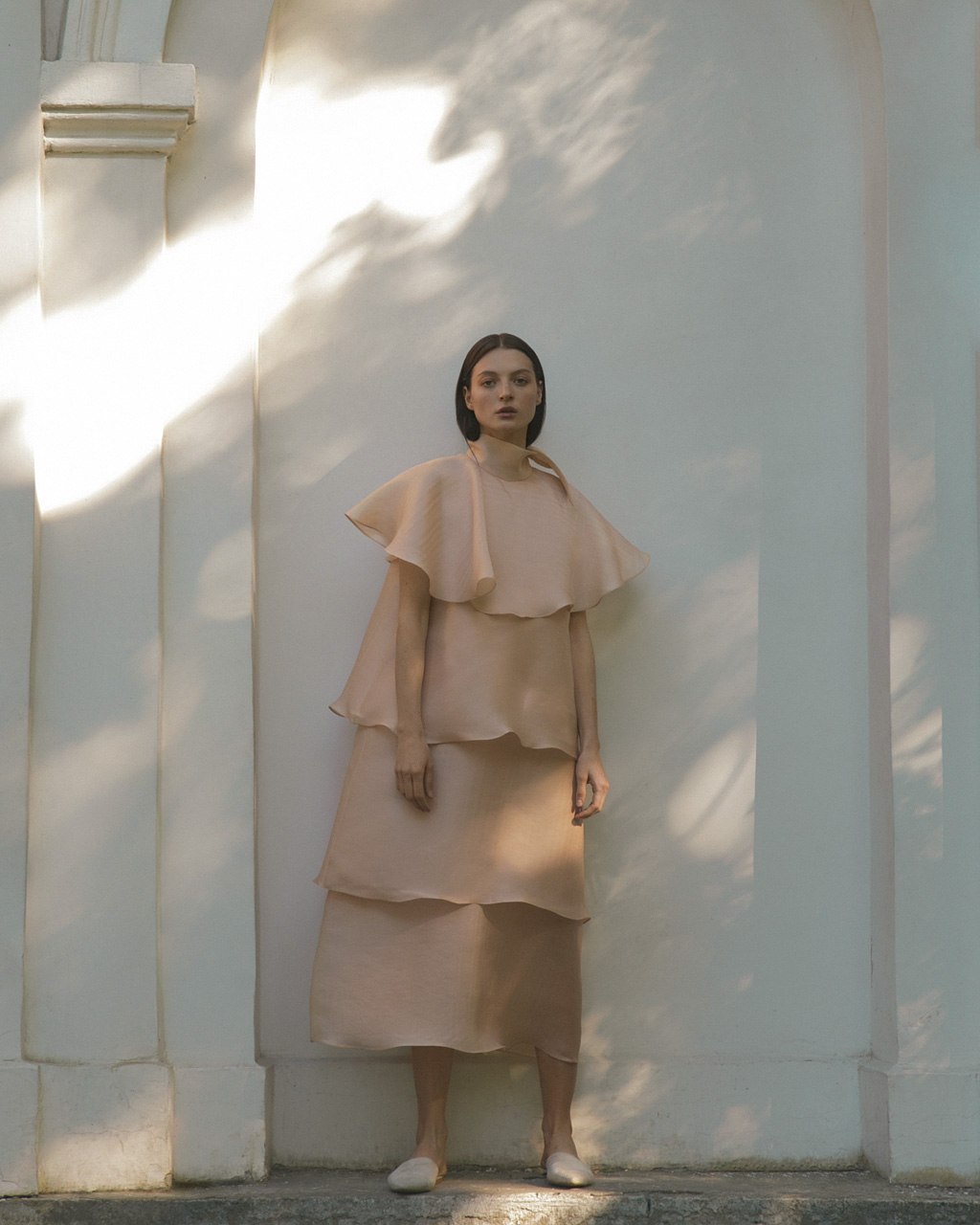
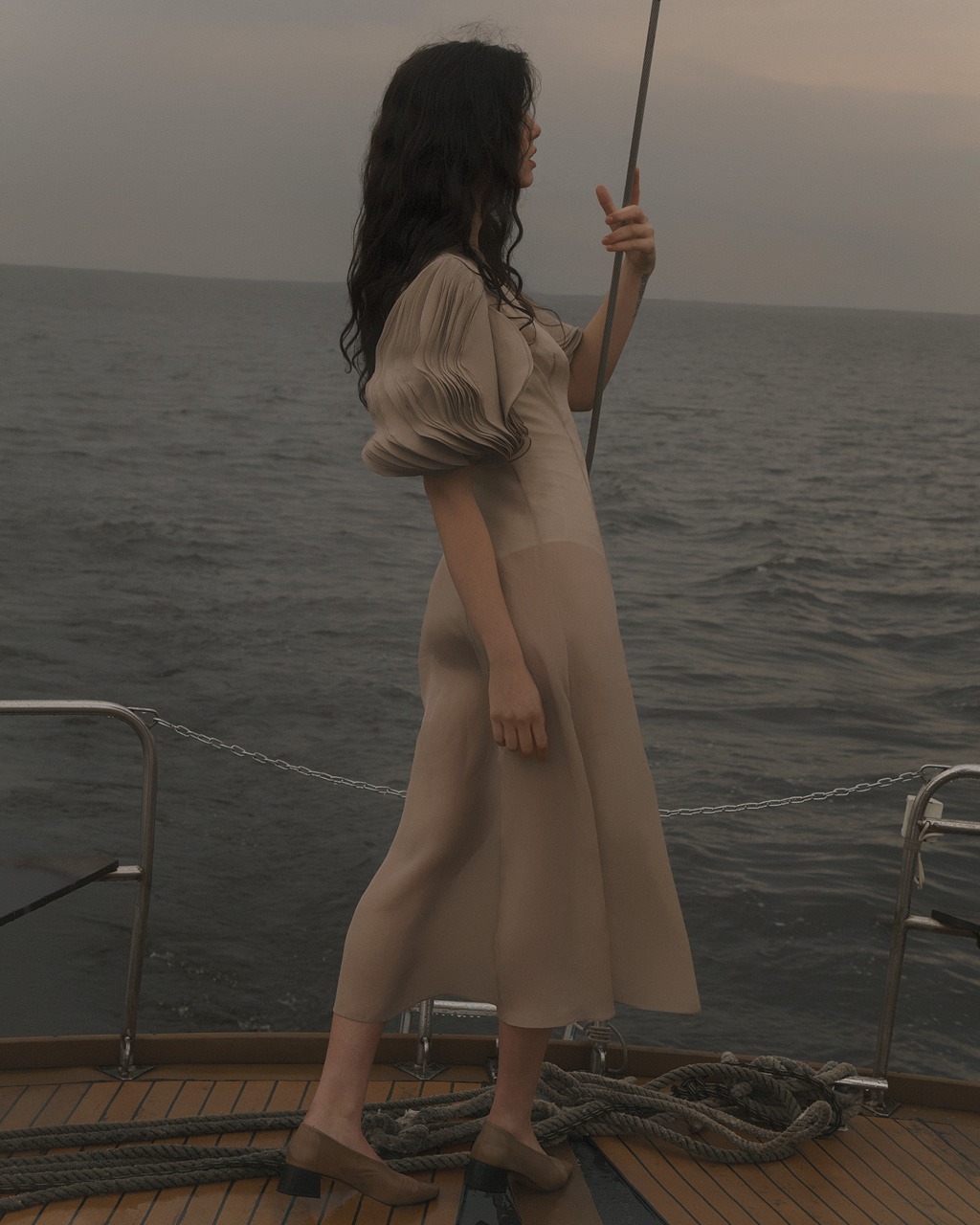
It may seem surprising, but sophisticated couture items are in demand. At the beginning we did not actually expect such dresses to have commercial success. It has always been about finding a beautiful fabric and designing something beautiful out of it; then the piece goes into manufacturing and photographing. These dresses have happened to be sold all over the world. Over the last week, we made deliveries to Japan, China, Portugal, and the US. People order dresses from us without trying them on, which is actually great.
Still, is it the basic collection that sells best?
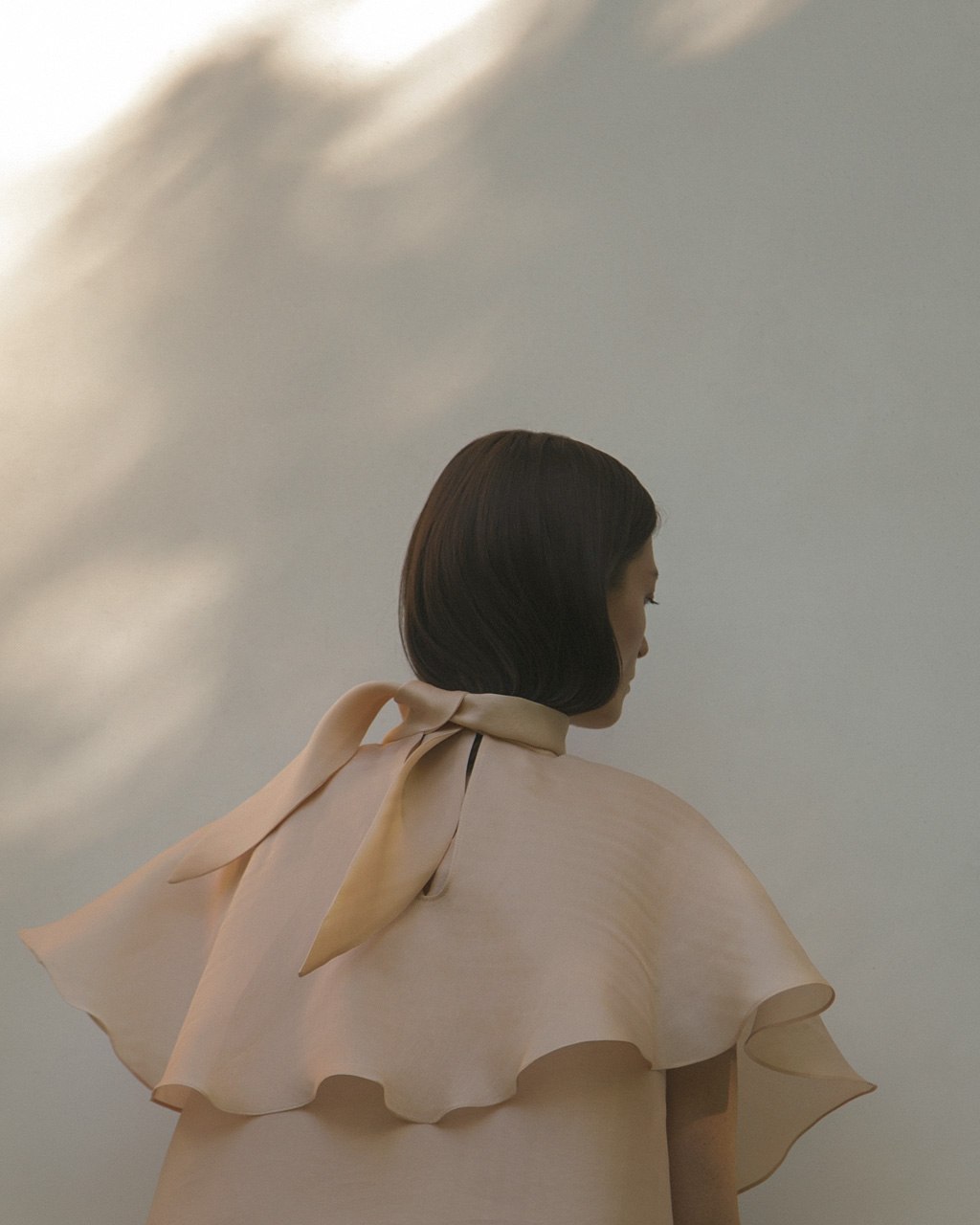

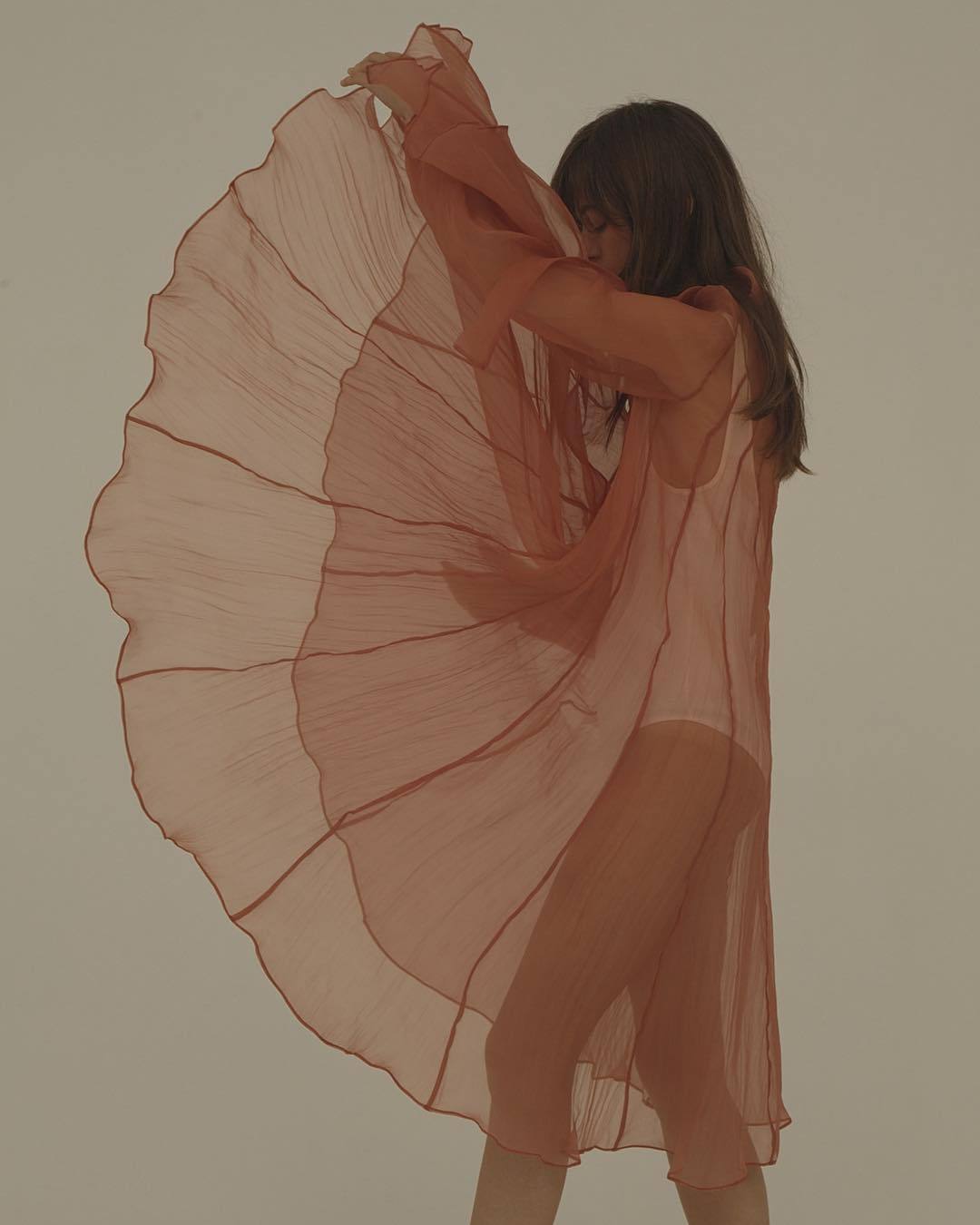
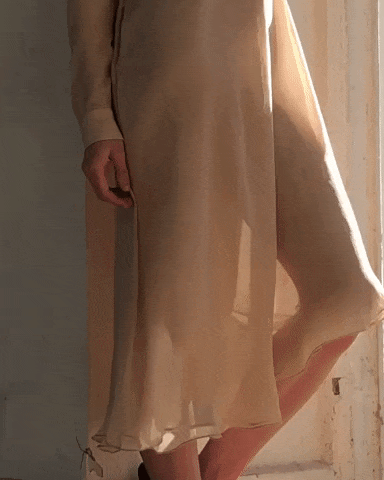
What made it possible?
We have had no intention of becoming an international brand; we do not even have a development manager. I have never even dreamed that everything would be like it is now. I simply sat down to make my first dress. It was probably about a year ago that I formulated my biggest fear: I do not want my brand to become a closed studio, just one of many.
It seems to me that we speak one language or share one truth. Other people understand my textile language and we find each other. I have never had any intention of attracting a specific target audience, it just happened naturally.
Besides, our friends help us a lot. They like what we do and tell others about our work. I think this also adds to the result.
It seems to me that we speak one language or share one truth. Other people understand my textile language and we find each other. I have never had any intention of attracting a specific target audience, it just happened naturally.
Besides, our friends help us a lot. They like what we do and tell others about our work. I think this also adds to the result.
Do you feel more like a St. Petersburg brand?
Yes. I have just realized this quite recently, when we went to Moscow to participate in a pop-up store. Of course, everyone tells us to open up a store in Moscow, asking why we have not done it yet as this is a very logical next step. However, I have decided for myself that I am completely satisfied with our location. It seems to me that this is not a significant distance and there is no problem that we are here. And I like that we have the reputation of a St. Petersburg brand of clothing, even though I do not communicate with people that often, do not attend fashion weeks, and do not know any local designers.
I CLING TO EVERYTHING THAT HAPPENS AROUND ME, SOME WORDS MY FRIENDS SAY, SOME DETAILS, A WOMAN PASSING BY, AND BUILD A STORY AROUND IT
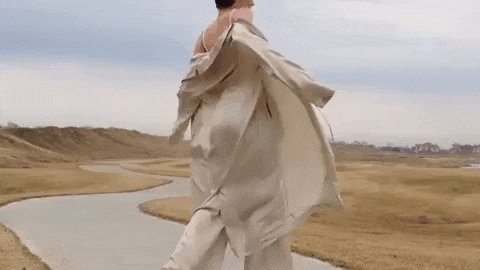
You worked as a costume designer. How did it influence the brand and you?
It was a small workshop making costumes for motion pictures and some urban events. I was lucky to work with Nadia Vasilyeva. At that time, I did not realize how useful this experience was for me: people would bring their movie scripts and we had to dress up the characters based on their personal features. This was the most rewarding part of the job. It was nice that they charged me with complete management of the wardrobe department since I had no experience and I did everything intuitively.
Photographs from your look books have several times been published by the CLO account. Many brands and stores attempt to copy the style of your photo shoots. How do you feel about that?
CLO found us; there was nothing we did for it. I do not follow our imitators, there is no time, but the fact that they exist does not offend me.
Who is working on the visual design of MY812 and how is it produced?
I worked with Ksenia Shabalina for a year: she was in charge of photo sessions and external communications and then left to Moscow. Now, photo sessions are organized by Zalina Shokarova, who previously worked in Ksenia's team. We have a very calm duet, with no pressure; we listen to and respect each other.
I cling to everything that happens around me, some words my friends say, some details, or a passing by woman, and build a story around it. For example, for a new silk collection campaign, Zalina found a very beautiful girl from Belarus who works as a model in Paris. Sometimes a person enraptures you so much with their beauty that you want to tell your own story about them. I flew to Italy, bought a lot of silk, and imagined this girl as the heroine of my "silk story". She flew to St. Petersburg and we organized a photo shoot.
Everything works out when everyone listens to how they feel. I have never wanted to say: "This is how I see and this is how you must show it." There is the product, the material with which I work — this is the result of my efforts. And there is Zalina and our current photographer Anastasia, who see it in some other way.
We have a joke about everything coming together in the end. We never set any strict goals or tasks: everyone does what they love and want, and then we get this excellent result. We just say: "It all came together." If I have missed a photo shoot and ask Zalina how it was and her reply is everything came together, I understand that it went all fine.
I cling to everything that happens around me, some words my friends say, some details, or a passing by woman, and build a story around it. For example, for a new silk collection campaign, Zalina found a very beautiful girl from Belarus who works as a model in Paris. Sometimes a person enraptures you so much with their beauty that you want to tell your own story about them. I flew to Italy, bought a lot of silk, and imagined this girl as the heroine of my "silk story". She flew to St. Petersburg and we organized a photo shoot.
Everything works out when everyone listens to how they feel. I have never wanted to say: "This is how I see and this is how you must show it." There is the product, the material with which I work — this is the result of my efforts. And there is Zalina and our current photographer Anastasia, who see it in some other way.
We have a joke about everything coming together in the end. We never set any strict goals or tasks: everyone does what they love and want, and then we get this excellent result. We just say: "It all came together." If I have missed a photo shoot and ask Zalina how it was and her reply is everything came together, I understand that it went all fine.
What will your new story be about?
When we were photographing in Marrakesh with Maria Kitaeva and Ksenia, Maria said that the winter collection had to be in Deauville. I thought it would actually be a very beautiful landscape for the St. Petersburg winter. It is very easy to line up plots there. You, as an artist, dress up the characters in whatever you want. Imagine some colours and textures, watch A Man and a Woman several times, listen to music. And it all gets interwoven into the general plot.
You had been working with Masha Kitaeva for a very long time, and then Anastasia came along. How did the change of the photographer affect the visual representation of the brand?
There was no such change. Maria Kitaeva is my close friend; I know that if I ask her, she will come to help. Not so long ago, she opened her own store called Parcel and she is now terribly loaded with work all the time. With Anastasia, we tried making the first photo shoot of the bodysuits and she did so well completing the task. We never explicitly set that we decided to continue the cooperation. This is about the common language we speak, not the customer/contractor relationship. Anastasia loves what we do and we love what she does.
Do you get jealous when your photographer makes photo shoots for someone else?
Well, yes, I do a little. But I am sure that she loves us the most.
What do you do besides MY812?
I have a daughter and MY812.There is nothing else I would want. My life is at home and at my work, and the result brings me so much joy that I am not yet ready to add anything new.
I have known Albina since her first collection in 2015. The first collections were a set of beautiful and solid things, but not united by any common idea. At the same time, Albina's brand was growing and developing very quickly. While watching this development, Maria Kitaeva and I knew that it was unique and truly different from many others. After I finished working as the creative director for Gate31 and left for Berlin, I had more time to look at MY812 from the outside: it was beautiful, but no one knew about it, because Albina is a master of her craft, but did not have a clue how to promote it.
I offered her to structure the content and start publishing photos, telling the story of femininity and demonstrating its special aesthetics. Albina entrusted it to me completely as we knew we had absolutely the same idea of female beauty. We would joke that we liked to undress women rather than to dress them, which may be seen in further collections of the brand, in all those translucent silk shirts, deep cuts, and body-fitting forms.
I offered her to structure the content and start publishing photos, telling the story of femininity and demonstrating its special aesthetics. Albina entrusted it to me completely as we knew we had absolutely the same idea of female beauty. We would joke that we liked to undress women rather than to dress them, which may be seen in further collections of the brand, in all those translucent silk shirts, deep cuts, and body-fitting forms.
Our photo shoot in Paris for the autumn-winter 2017/2018 was a success thanks to a personal story. It was Maria Kitaeva's birthday and our gift was a ticket to Paris. We thought it would be great for the three of us to meet there; besides, I was just returning to Russia. As a result, Albina flew there with her recently finished new collection, some jackets were even missing buttons, we would pin up everything with brooches that I had bought at a vintage market in Berlin the day before. We rented an apartment in Le Marais, invited a model that worked for Azzedine Alaïa and the Row, and made this shoot in the format of a street walk. It was well-received by the media as this content was different in its quality from what the audience used to see in Instagram; it featured a new location and its interpretation by Maria. She did not show Paris through croissants and hydrangeas, but photographed against a beige wall with graffiti and trucks unloading food; she opted to show the real Paris.

People began subscribing to the account, and these were people with a similar aesthetic sense, who liked our natural style with minimum post-processing and real colours. I sincerely wanted to share this story, I would often mention it on my page; Maria would often speak about it (she had just launched her project Parcel). And so it happened that our personal story produced this feedback, while, for us, it was easy and interesting to tell this story. And it still is: many photos posted to the account are either from Maria Kitaeva's personal archives or photos provided by friends of MY812.

Zalina Shokarova,
stylist, art director of MY812
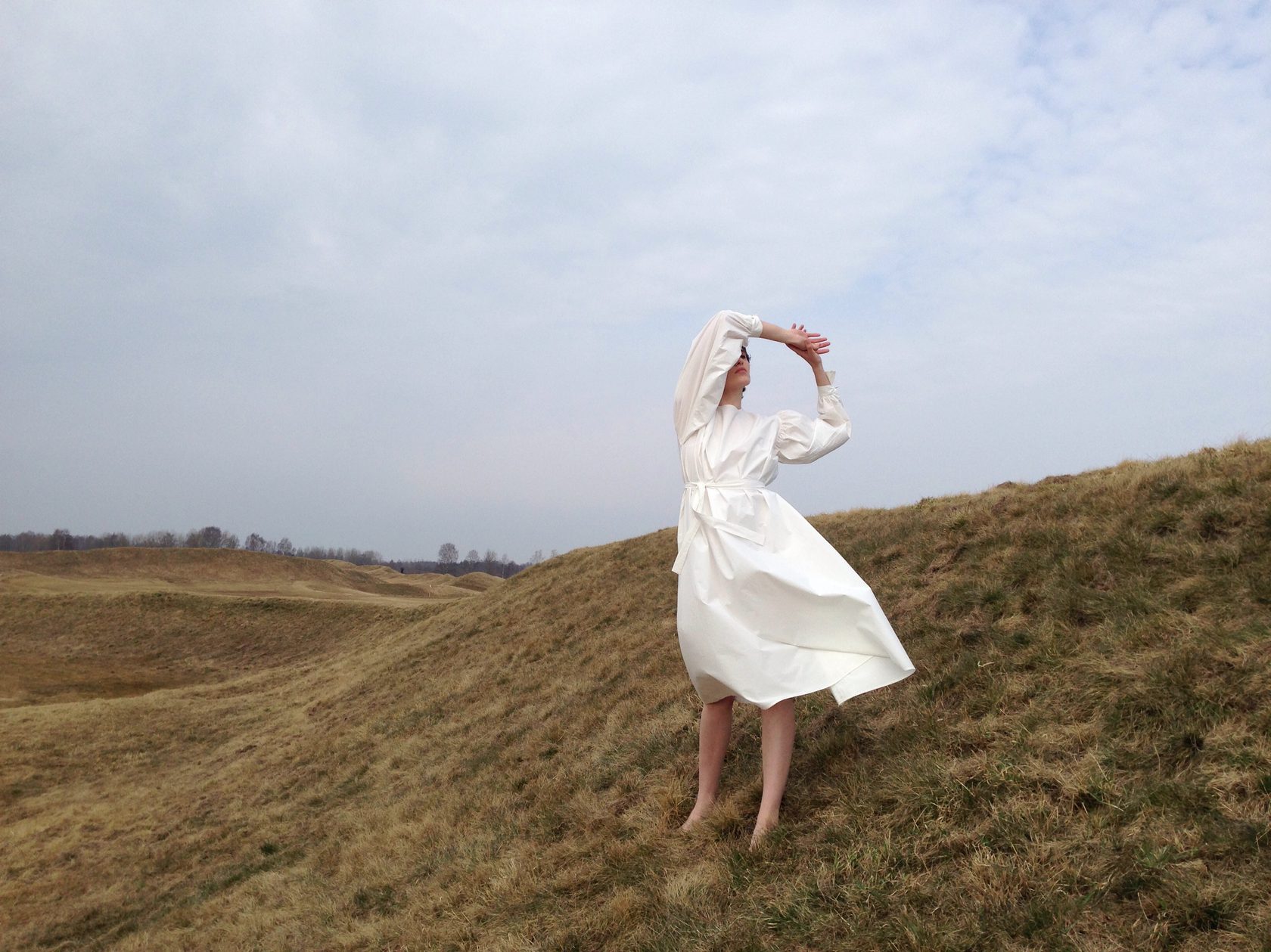
I always liked the visual concept of MY812, so I never wanted to change anything globally. This content is not exactly about clothes, but rather individual stories of our characters featured in different circumstances. The entire focus is always on a girl, not clothes. We understood that it is not at all necessary to show clothes from all angles, to set the perfect lighting and straighten all the folds in order to make the audience interested in the clothing; sometimes you just need to make a photo filled with life.
What I do for the brand is more about art direction than styling. So, I never think in terms of separate looks, but rather the final picture, and apply styling as one of many tools enabling a good photo.
When conceiving the idea of a new photo shoot, I usually make a mood board and then we start a discussion with Albina and our photographer Anastasia. After that, I request casting materials from all model agencies or may sometimes find the most suitable face on the street by chance. We organize a fitting and a small test so that there were no surprises on the set. After that, together with the photographer, we visit the location and select the best shooting points.
When conceiving the idea of a new photo shoot, I usually make a mood board and then we start a discussion with Albina and our photographer Anastasia. After that, I request casting materials from all model agencies or may sometimes find the most suitable face on the street by chance. We organize a fitting and a small test so that there were no surprises on the set. After that, together with the photographer, we visit the location and select the best shooting points.
Anastasia Lisitsyna,
MY812 photographer

I find it difficult to put the visual concept of the brand into words. Imagine a soft beam of light, coming from the side, covering a female body, carefully highlighting the curves and creating smooth light/shadow transitions. This is how I could describe it. As for techniques, I really like using the side and back light, because it looks beautiful in combination with silk and translucent fabric.
Ideas for our photo shoots come in very different ways. Sometimes it starts with a muse, like in the case of Maria Nikitina from Paris: MY812 got in touch with her and, after a video message, we all knew we had to do a photo shoot with her. After that, the stylist and I had to think everything over, look for a location and decide on all other aspects. There is usually no clear assignment, but there is a lot of discussion before photographing and there is always a mood board to be guided by. For example, it may be decided that more details are to be shown for a certain dress, or that a certain item should also be shot from the back, or the stylist may offer a certain perspective during the shoot, but otherwise they give me a lot of freedom and I infinitely appreciate it.
Ideas for our photo shoots come in very different ways. Sometimes it starts with a muse, like in the case of Maria Nikitina from Paris: MY812 got in touch with her and, after a video message, we all knew we had to do a photo shoot with her. After that, the stylist and I had to think everything over, look for a location and decide on all other aspects. There is usually no clear assignment, but there is a lot of discussion before photographing and there is always a mood board to be guided by. For example, it may be decided that more details are to be shown for a certain dress, or that a certain item should also be shot from the back, or the stylist may offer a certain perspective during the shoot, but otherwise they give me a lot of freedom and I infinitely appreciate it.
I often hear from my new customers that they like our photo shoots with MY812 and want me to do something in similar colours or at the same location. I think that each brand should strive to create its own visual style, so I try very hard not to extend the same aesthetics to all my photo shoots. For me, the most difficult thing is to do something new without losing my personal style. It often seems that different photo shoots are too similar or, on the contrary, some of them do not fit into my aesthetics. Anyway, working with each new project, I first of all try to understand what it is about and who it is for. If the customer is unable to specify that for me, I try to do it myself and propose a concept that would fit the brand and be rewarding for me.
This article features the photos by Maria Kitaeva, Anastasia Lisitsyna and Sonya Chigireva
TEXT BY KATYA RABOTA
